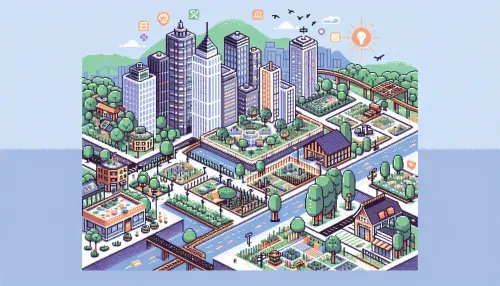Smart Spaces: Creating Autism-Friendly Environments Through IoT Innovations

The Internet of Things (IoT) has revolutionized various aspects of our lives, including how we design and interact with our living spaces. When exploring the impact of IoT on autism care environments, a myriad of opportunities arise to create tailored, supportive, and inclusive spaces for individuals with autism spectrum disorder (ASD).
The Internet of Things (IoT) and Autism Care Environments
Autistic individuals often thrive in environments that are predictable, structured, and catered to their sensory needs. With IoT innovations, homes can be transformed into smart spaces that accommodate these requirements seamlessly. By integrating smart devices and sensors, caregivers can customize the environment to minimize sensory overload and create a calming atmosphere conducive to the well-being of autistic children.
How IoT Transforms Homes for Autistic Children
One remarkable application of IoT in autism care environments is the ability to regulate sensory stimuli through customizable ambiance control. By leveraging IoT-enabled lighting, sound, and climate control systems, caregivers can adjust the environment to align with the specific sensory preferences and sensitivities of autistic individuals. This personalized approach fosters a comforting and supportive atmosphere within the home.
IoT technologies offer unparalleled convenience by automating various aspects of daily routines for families with autistic members. From automated reminders for medication schedules to smart meal preparation and organization systems, IoT solutions alleviate the cognitive load on caregivers, allowing them to focus more on meaningful interactions and quality time with their loved ones on the autism spectrum.
Regulating Sensory Stimuli with Customizable Ambiance
Safety is paramount in any home, especially for individuals with ASD who may require additional safeguards. IoT solutions facilitate the implementation of enhanced safety features such as smart surveillance cameras, door sensors, and location tracking devices. These technologies provide peace of mind to caregivers while respecting the autonomy and privacy of autistic individuals within the home environment.
Simplifying Daily Routines through Automation
IoT innovations extend beyond environmental adaptations to encompass assistive devices tailored specifically for autistic users. From smart wearable technology that supports communication and emotion regulation to interactive devices that promote independent living skills, these assistive IoT solutions empower individuals with ASD to navigate their environments with increased confidence and autonomy.
Enhanced Safety Features in Smart Homes
By bridging the gap between technology and comfort, IoT innovations have the potential to revolutionize care settings for autism. From specialized calming rooms equipped with sensory-responsive IoT systems to therapy spaces enhanced by interactive technology interfaces, the integration of IoT fosters a harmonious synergy between technological advancements and the emotional well-being of individuals on the autism spectrum.
In conclusion, the intersection of IoT and autism care environments presents unprecedented opportunities to create smart spaces that cater to the unique needs and preferences of autistic children. Through customizable ambiance control, automation for simplified routines, enhanced safety features, assistive devices promoting independence, and the seamless integration of technology and comfort in care settings, IoT innovations are instrumental in shaping inclusive environments that empower and support individuals with autism spectrum disorder.
Frequently Asked Questions
IoT enhances safety for individuals with autism by implementing features like smart surveillance cameras, door sensors, and location tracking devices. These technologies provide caregivers with peace of mind while ensuring the autonomy and privacy of autistic individuals within their home environment.
Customizable ambiance control plays a crucial role in autism care by allowing caregivers to adjust lighting, sound, and climate according to the sensory preferences of autistic individuals. This personalized approach creates a calming atmosphere that supports emotional well-being and minimizes sensory overload.
Check Out These Related Articles

Crafting Inclusive Spaces: Architectural Innovations for Autistic Individuals

Designing for Inclusion: How Autistic Children are Shaping the Future of Playgrounds

Pioneering Spaces: Designing Autism-Friendly Urban Environments That Foster Independence
